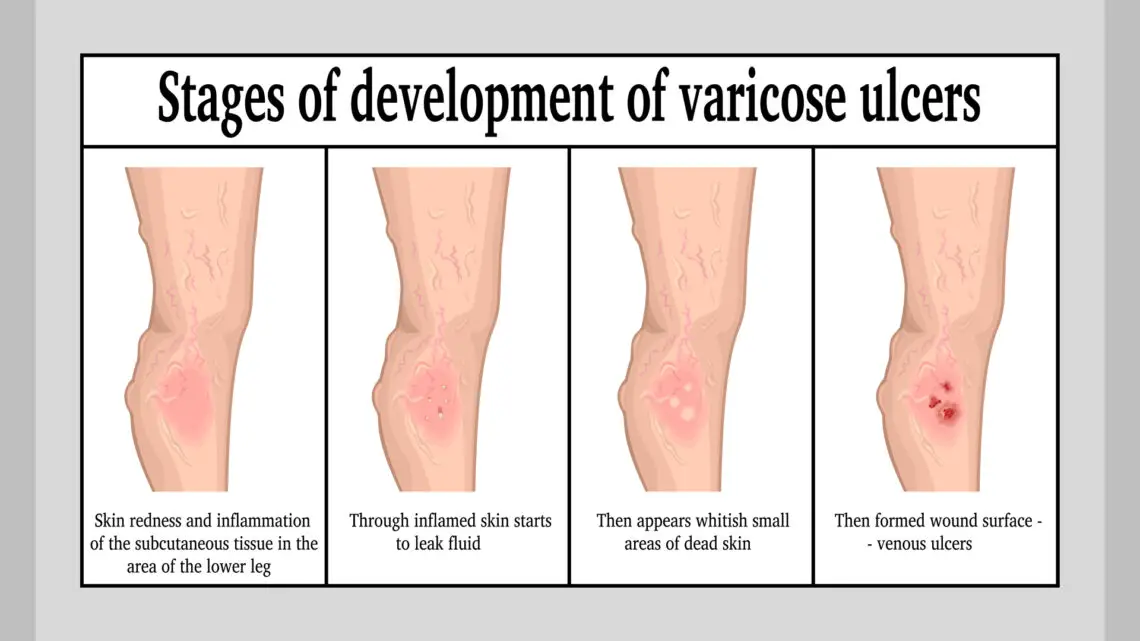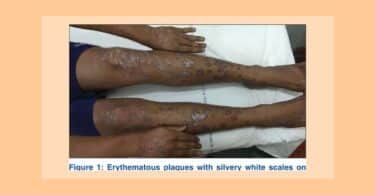Venous leg ulcers is a chronic health issue manifested by recurrence and slow healing1. It is the most common chronic lower extremity ulcer, affecting 1% to 3% of the U.S. population12. Due to the nature of its slow healing, frequent recurrence, and consistent pain it can cause disability, poor quality of life and increased health care related cost for patients and for health care systems7.
It represents 60 and 80% of all leg ulcerations which occurred due to the presence of venous disease2,3. The recovery rate is slow, average is only 60% healed by 12 weeks while 75% develop a recurrence within 3 weeks4. It is associated with a recurrence rate of 60–70% at 10 years.13
Researchers found that at least 60% of venous ulcers result in a chronic wound5. Venous ulcers are more prevalent in patients with older age with concomitant chronic venous insufficiency and it is also more prevalent in females than males and among patients who are obese, immobile and who have congenital absence of veins or a history of deep vein thrombosis (DVT) or phlebitis.6
Deep Vein Thrombosis (DVT) can also damage the vein valves and result in deep venous insufficiency. Together with varicose veins, DVI is part of chronic venous insufficiency.
Varicose veins are enlarged veins which commonly occur in legs and feet. Prolonged standing and walking along with the factors such as obesity, smoking, old age increases the pressure in the veins of the lower body8. Varicose veins due to damaged or improperly working valves in the veins, cause blood to back up and make the vein swell9. The increased pressure can weaken the skin and damage the capillaries, allowing proteins to leak into the tissue and an ulcer forms.
Symptoms:
People with venous leg ulcers often experience the following signs and symptoms around the affected area:
Swollen ankles, discoloration or darkening of the skin, hardened skin, leg feeling hard and heavy, aching or swelling in legs, flaky, scaly and itchy skin on legs such as varicose eczema, swollen and enlarged veins on legs.10
Signs of an infection: –
Venous ulcers are more likely to get larger over time and susceptible to bacterial infection. Symptoms of an infected leg ulcer can include:- Redness, swelling, worsening pain, green or foetid discharge, obliterated redness on black or brown skin, high temperature10.
Treatment:
Venous insufficiency treatment can avoid development of venous skin ulcers. Weight reduction and daily walking improves circulation. Compression stockings, rest, elevation of the legs decrease hypertension11. Dressings and local cures acts as temporary measures and don’t treat the cause. Surgical treatment focuses on correction of venous hypertension, superficial vein surgery, laser or radiofrequency ablation.8
Homoeopathic Treatment Approach
As per homoeopathy, miasms which we carry genetically are the root cause of diseases providing fertile ground for various maintaining causes and predispose individuals to various disorders. We can say Dr. Hahnemann invented the term ‘miasm” as genetic predisposition.
While varicose vein ulcers come under miasms psora – syphilis we all know in today’s era that the majority of us carry all three miasms.
Following are remedies for varicose ulcer. It is extremely important to remove miasmatic blockages for the complete cure.
Arnica montana, Syphilinum, Thuja, Graphitis, Sulphur, Staphisagria, Calcarea carbonica. Carbo vegetabilis., Hamamelis., Pulsatilla, Lycopodium, Vipera, Bellis Perrinis, Zincum metallicum. Silicia , Arsenicum album, Pyrogen, Nitric acid , Fluoric Acid Anthracinum, Aurum met. The list is not exhaustive.
CASE
A recurring infected varicose ulcer case was treated with a single homoeopathy medicine:
A 29 years female patient presented with infected varicose ulcer. She reported recurring varicose ulcer since one year, despite treatment she received from a dermatologist
She said she was studying rigorously for a competitive exam. To control her weight during prolonged sedentary study hours she started doing her studies in a standing posture using a standing study table. However, with consistent standing hours she developed swelling of both legs.
She ignored this swelling as she didn’t want to distract from her studies. One day while she was sleeping in the middle of night, she scratched her leg as it itched. Next morning, she noticed she developed a small boil at the same spot she scratched which was the inner side of her right ankle. Eventually the spot started oozing sticky fluid. She used some antibiotics locally for few days and thought it would recover, but eventually it develops into a ulcer.
She kept regularly dressing the wound with antibiotics and stopped prolonged standing. After she finished her exam, she went to a dermatologist. After a few tests it was diagnosed as varicose ulcer along with varicose eczema. At that time the ulcer was worse with a yellow-greenish fetid discharge, leg swelling and excruciating burning pain.
A dermatologist prescribed antibiotics and external ointment applications and compression therapy. She resumed working in ICU in the emergency department where she must stand most of the time. The ulcer relapsed within 3 weeks with the same previous symptoms: fetid discharge, burning, excruciating pain. She had to temporarily resign from the job to concentrate on ulcer treatment.
She again went to a dermatologist who prescribed some medicine. The ulcer subsided with large thick flakes. While ulcer subsided with allopathic treatment, she got a dry butterfly kind of rash on her cheeks and forehead and started getting dry cough and nasal allergies.
She resumed her job and within 2-3 weeks the varicose ulcer symptoms recurred. with same severity as before. After several attempts with allopathic treatment and recurring symptoms she started homoeopathic treatment. At that time her leg was dark, burning at night, oozing yellow- greenish discharge on a red raw open wound. She had to elevate her leg due to intense, unbearable throbbing and burning pain at the bedtime.
Other than Pyrogen and Anthracinum the homeopath didn’t know what else to try. She was not getting better. She continued to suffer excruciating burning pain with fetid yellow- greenish discharge along with her inability to work in the hospital
At this point I took her case. This case required urgent treatment with no possibility of recurrences as the patient was supposed to move abroad for further studies.
My observations:
Swollen right foot extending to lower ¼ of leg
Yellow/ green fetid fishy smell discharge
Swollen black dry hard parchment kind of appearance of affected area.
Patient reported burning, excruciating pain in affected leg
Medical history- allergic rhinitis, allergic conjunctivitis, sinusitis cured with homoeopathic treatment.
Childhood history of wet eczema, bronchitis, allergic skin disorders.
Desire for milk, sweets and chilli
Irritable nature
Fastidious, studious always in a hurry and worried. Rapid speech
Prescription
July 1st – I prescribed Tuberculinum 200- 2 doses. External applications strictly prohibited except cleaning with distilled water.
Rationale for Tuberculinum:
Chronic History of allergies in patient and in family
Mixed miasm, Chilly patient, Recurrent tendencies
During earlier homoeopathy treatment well selected medicines failed, which indicates miasmatic blockage.
In three days, she reported that the swelling disappeared and itching started (Please note she only had itching when varicose ulcer initially developed- old symptoms return). She reported that even if she mildly rubs the surrounding non-affected area of the leg the central affected area get inflamed and it appeared pus started forming again.
Patient has been instructed not to scratch and be patient.
July 26 2008 – Repeated Tuberculinum 200- 2 doses.
Patient travelled abroad safely, started graduate school. She reported that the affected leg shrunk with no more discharge, pain or scaling in last 3 weeks. The affected area mildly itches just like when any wound starts healing.
Aug 26 weeks Tuberculinum 200 – 2doses repeated.
Patient started student job which required prolonged standing. Just to have additional protection she wrapped a compression bandage around her ankle.
After August there were no more symptoms. She completely recovered in 3 months with Tuberculinum 200, Total 6 doses for the total duration of three months
It not only healed he chronic infected varicose ulcer but also cured deep chronic long standing bleeding and cracks insole which patient had since childhood. Tuberculinum brought the patient back to a complete state of cure for the next 15 years with no more recurrence to this day.
My observation, homoeopathic treatment from earlier homoeopath didn’t cure the case but probably it helped in paving the path of recovery for Tuberculinum.
Where modern medicine fails to prevent recurrence and to establish speedy permanent recovery, a few doses of the correct homoeopathic remedies shows miracles which lasts forever!
- https://pubmed.ncbi.nlm.nih.gov/33980324/
- Cushman M. Epidemiology and risk factors for venous thrombosis. Semin Hematol. 2007;44(2):62–69. doi: 10.1053/j.seminhematol.2007.02.004.
- Nelson EA, Adderley U. Venous leg ulcers. BMJ Clin Evid. 2016;2016:1902.
- Abbade LP, Lastória S. Venous ulcer: epidemiology, physiopathology, diagnosis and treatment. Int J Dermatol. 2005;44(6):449–456.doi: 10.1111/j.1365-4632.2004.02456.x.
- Frykberg RG, Banks J. Challenges in the treatment of chronic wounds. Adv Wound Care (New Rochelle) 2015;4(9):560–582.doi: 10.1089/wound.2015.0635.
- Vasudevan B. Venous leg ulcers: pathophysiology and classification. Indian Dermatol Online J. 2014;5(3):366–370. doi: 10.4103/2229-5178.137819.
- Barnsbee L, Cheng Q, Tulleners R, Lee X, Brain D, Pacella R. Measuring costs and quality of life for venous leg ulcers. Int Wound J. 2019;16(1):112–121. doi: 10.1111/iwj.13000
- https://www.mayoclinic.org/diseases-conditions/varicose-veins/symptoms-causes/syc-20350643
- https://www.nhlbi.nih.gov/health/varicose-veins
- https://www.nhs.uk/conditions/leg-ulcer/symptoms/
- https://www.bcm.edu/healthcare/specialties/cardiovascular-medicine/vascular-health/venous-insufficiency-and-venous-ulcers
- https://www.aafp.org/pubs/afp/issues/2019/0901/p298.html
- Finlayson KJ, Parker CN, Miller C, et al. Predicting the likelihood of venous leg ulcer recurrence: The diagnostic accuracy of a newly developed risk assessment tool. Int Wound J2018; 15: 686–694.






